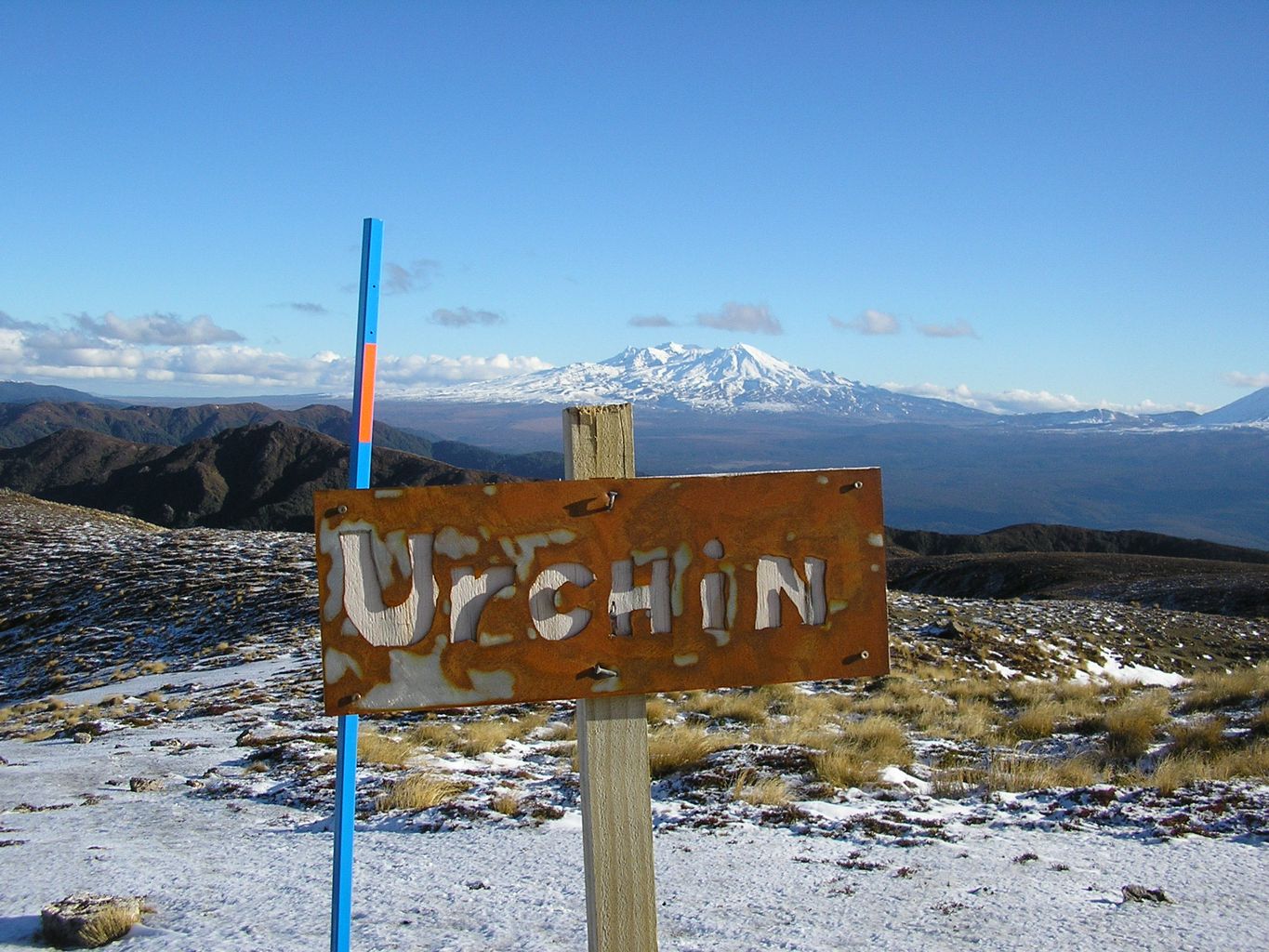Mount Urchin

Distance: 6.6km Allow: 3-4hours Climb: 530m Descent: 530m
Located in the Kaimanawa Forest Park, the half day hike up to Mt Urchin offers a unique perspective of the volcanoes of the Central North Island.
A traditional New Zealand “tramping” track, the Urchin track climbs up through a mix of ancient native hardwood and gnarled beech trees. This native forest is home to many species of bird, from the frenetic fantail, the shrill long-tailed cuckoo in summer, to the occasional screech of Kaka, our native bush parrot. The change in vegetation is noticeable we move through different forest zones before emerging above the tree line into the alpine zone of mosses, tussock grass and mountain daisy. Above the bush line we have panoramic views extending around from the eastern side Desert Road, the three volcanoes of Tongariro National Park, as well as Lakes Rotoaira and Taupo. A great place to give you perspective of the forces that shaped the Central Plateau, in an area visited by only a few people a day.
Dominated by the Kaimanawa mountain ranges, Kaimanawa Forest Park encompasses a vast expanse of native forest, shrublands and tussock grasslands.
Dominated by the Kaimanawa mountain ranges, the park encompasses a vast largely unmodified expanse of native forest, shrublands and tussock grasslands. It was gazetted in 1969 and is managed to protect and conserve soil and water, native vegetation, wildlife and scenic values.
Vegetation
Beech forest covers most of the park. Red and silver beech are dominant in the north and east, with mountain beech in the south and interior valleys. Towards the west podocarp forest (rimu, matai, totara) becomes more frequent. Between 1160 and 1370 m the forest gives way to tussock grassland and subalpine vegetation.
Birdlife and a carnivorous snail!
The most common native birds in the park are the pigeon, fantail, bellbird, rifleman, robin, grey warbler, tomtit, whitehead and kakariki. In lesser numbers are blue ducks, New Zealand falcon, pipit, tui, morepork, fernbird, kaka, black and pied shags. In summer the shining and long-tailed cuckoos are common. The kiwi is now rarely seen or heard in the park but you may still hear its night calls or see signs such as probings or footprints.
The Kaimanawa Forest Park is also home to Powelliphanta marchanti, one of New Zealand's giant land snails. In parts of New Zealand Powelliphanta can reach up to 90mm across, or the size of a man’s fist. Their oversize shells come in an array of colours and patterns, ranging from hues of red and brown to yellow and black. They are also carnivores particularly liking to eat earthworms, sucking them up through their mouth just like we eat spaghetti!
All birdlife and vegetation in the forest park is protected. Please remember that dogs are a real threat to many bird species particularly kiwi and blue duck.
Physical features
The catchments of four major rivers lie within the park - the Mohaka, Rangitikei, Ngaruroro and Tongariro - as well as several smaller rivers.
The park interior around the main range is of rough and broken topography: it is less rugged toward the east, with a more gentle terrain around the park perimeter.
Which best describes you?
Traveling as two or more: NZ$120.00 per person, Shared Group rate. Groups no larger than 8 per guide.
Traveling Solo: if you book in on a Shared Group Trip for NZ$120.00, but no-one else has booked for that trip, we will only charge a single person surcharge of an additional NZ$70.00 (making it a total of NZ$190.00) on the day if we need to run a trip just for you. You can email or message us to check.
Private Guided trip: NZ$190.00 per person for two or more people.
Private Guided Solo Traveler: NZ$270.00 guarantees it will just be you and the Guide on the trip.
